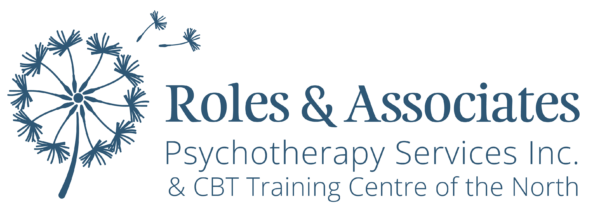What is Pain?
While nearly everyone experiences physical pain from time to time, pain that lasts for weeks, months, or years can have a detrimental effect on your daily life and mental well-being. This is because pain can be a deeply unpleasant sensory and emotional experience.
Chronic pain is often recognized as any sort of physical pain that lasts for over three months and can happen anywhere in your body. The pain may be felt all the time or it may come and go. While it is often associated with physical damage to the body, sometimes the pain can occur without any known cause.
There are two types of chronic pain:
The first is chronic primary pain, which is pain that persists even after the body has completely healed from an injury, or pain that has no identifiable cause, including back pain, neck pain, pelvic pain, muscle pain, and headaches/migraines. Sometimes, chronic primary pain is psychosomatic, meaning the cause is by psychological factors such as stress, anxiety, and or depression.
The second type of chronic pain is chronic secondary pain, which is pain that occurs alongside an underlying disease or issue, for example cancer treatment, post-surgical pain, or rheumatoid arthritis. There are also several risk factors for experiencing chronic pain including genetics, obesity, age, previous injuries, having a physically demanding job, frequent stress, and smoking. While there are no proven methods to prevent chronic pain, you may be able to prevent certain conditions that lead to some types of chronic pain.
People with chronic pain may describe the feeling in many different ways, as each person’s experience of pain is different. Words commonly used to describe the pain often include:
- Aching
- Burning
- Shooting
- Stiffness
- Stinging
- Throbbing
Chronic pain can interfere with one’s ability to live an active lifestyle, as well as their ability to sleep restfully. People with chronic pain often experience:
- a decreased level of self-esteem;
- tend to feel angry, depressed, anxious, and frustrated.

Approaches to Therapy Treating Pain
If you are experiencing chronic pain, it is recommended that you first see your primary health practitioner or a pain specialist. In cases where a cause can be identified, healthcare providers will first attempt to identify and treat the cause of your pain. In instances where the source of the pain cannot be identified, healthcare providers will turn to treating or managing the pain itself. This can be done in many different ways, though the best treatment plans tend to use a variety of strategies, which include medications, lifestyle changes, and therapy.
Suitable medications may be prescribed by a qualified healthcare provider, who will also be able to discuss any of the possible side effects of the chronic pain medication. Beneficial lifestyle changes include: trying to reduce your stress as much as possible, participating in low-intensity exercises regularly, eating a healthy diet to promote your overall health, and getting enough sleep.
Psychotherapy may be used alongside other treatments to reduce or treat pain while improving your quality of life and mood.
Acceptance and commitment therapy (ACT) is an action-focused therapy approach where clients learn to accept their emotions and feelings rather than deny or avoid them. They also learn to accept their difficulties and needs as well as work on behavioural changes.
Brainspotting therapy™ (BSP) is a therapeutic process that uses specific points in the client’s visual field to access unprocessed trauma in the subcortical brain. BSP uses relevant eye positions, somatic awareness, focused mindfulness, and the therapist’s attunement to process and release the stored traumas which underlie a wide range of emotional and physical problems. It is a brain-body-based treatment that integrates well with other types of therapies. Often brainspotting is used in conjunction with bilateral sound - music or nature sounds that move back and forth between right and left ears, which balances activation of the right and left brain hemispheres and activates the parasympathetic, or calming, part of the nervous system. Brainspotting therapy was developed in 2003 by Dr. David Grand, an EMDR therapist and relational analyst.
Cognitive behavioural therapy (CBT) is a goal-oriented type of therapy that teaches the client how to first recognize and then change unhealthy ways of thinking and behaving. With the use of in-session practice and homework of skills to work on between sessions, this treatment is tailored to fit the client's goals and is a highly evidence-based collaborative psychotherapy.
Compassion focused therapy (CFT) is a type of psychotherapy that encourages individuals to be compassionate toward others as well as themselves. This type of therapy is primarily used for clients that struggle with self-criticism and self-contempt. CFT often includes exercises to practice mindfulness and appreciation. Sessions focus on examining the ways we talk to ourselves, where we might have first developed the particular tone and word choices used, and how we can make changes to how we speak to ourselves to increase self-compassion and appreciation.
It is the nature of the mind to be made up of subpersonalities or parts. Subpersonalities are aspects of our personality that interact internally, similar to the ways in which people interact. These sub-personalities can consist of wounded parts and painful emotions such as anger and shame. Underlying the parts is a person’s core or true Self. The Self can and should lead the individual's internal system.
Internal Family Systems (IFS) therapy helps individuals achieve balance and harmony within their internal system and subpersonalities/parts.
Using IFS, the clinician will support individuals in developing their Self so it can be an effective leader in their internal system. When the Self is in the lead, the parts will provide input to the Self and help to elevate “wounds” so that individuals can find their natural balance. IFS is suitable for individuals, couples, and families, and it can effectively treat a variety of conditions such as depression, anxiety, panic, phobias, trauma, substance use, physical health conditions, and general well-being.
Meaning therapy belongs to the humanistic-existential tradition, which emphasizes the importance of addressing existential anxieties and the human needs for meaning and authenticity. According to Frankl (1986) who developed logotherapy aka meaning therapy, three factors characterize human existence: spirituality, freedom, and responsibility. In meaning therapy we focus on the human responsibility to live meaningfully and purposefully in every situation on a daily basis in order to become what they are meant to be.
Psychodynamic psychotherapy is the oldest of the modern therapies and focuses on unconscious processes as they are manifested in the client's present behaviour. The goals of psychodynamic therapy are client self-awareness and understanding of the influence of their past on their present behaviour.
Brief psychodynamic psychotherapy enables the client to examine unresolved conflicts and symptoms that arise from past relationships and manifest themselves in their day to day life as current struggles.
Several different approaches to brief psychodynamic psychotherapy have evolved from psychoanalytic theory and have been used to treat many different mental health presentations.
As the name suggests, solution-focused brief therapy (SFBT) is a short-term goal-focused therapeutic approach largely geared towards discussing solutions. There is a brief need for discussion around the problem to examine what it is and explore potential opportunities to address it, but that is not the primary focus of this approach. This approach is rooted in the here and now, with an identified future-oriented goal involving lessening the negative impacts the identified problem has in your life.
The goal of SFBT is to collaboratively identify realistic solutions in as brief of a timeline as possible. SFBT is a versatile approach that can be used in areas such as individual, couples, or family therapy addressing anywhere from high stress life events to normal life stressors.
Contact Form
To request an appointment, please fill out your information using our secure form below and we will be in touch shortly. For more information, please contact us by phone or email: 705-929-1612 ext.6, [email protected].

